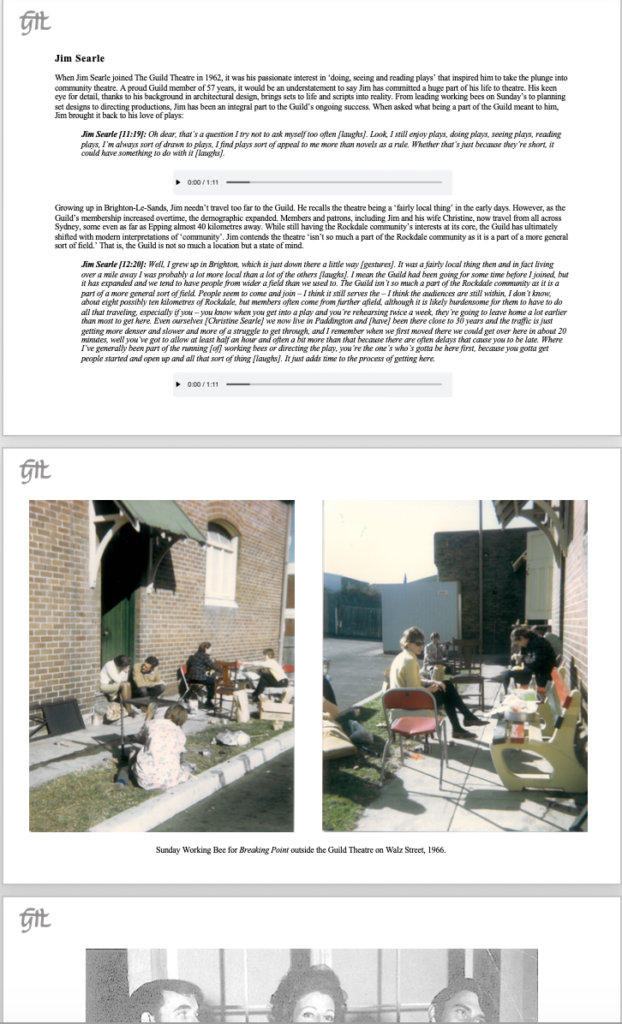Sixty-Six by Six is a collaborative oral history project between myself and The Guild Theatre, Rockdale. The project, presenting oral, written and photographic histories, seeks to demonstrate that local recreational facilities such as community theatres are vital to an enduring culture of community involvement. The project demonstrates the Guild Theatre not merely celebrates local talent and creativity, but endures as a much-loved local site of community-building, growth and sharing.

The project follows the personal journeys of six Guild members – those who have been with the Guild for nearly 60 years and those for only a year. The title of the project, Sixty-Six By Six, acknowledges sixty-six years since the Guild was formed, and the six Guild members who gave their time and personal stories to this project. Although each member’s story is unique in their experiences within the Guild and local community, there is a common sense of belonging and camaraderie amongst all Guild Theatre members. Each member had testified via interview the genuine communal nature of the Guild – a claim strengthened by the long-standing friendships Guild members have with each other.
This project relied heavily upon primary sources. Particularly, the oral histories of Guild members. My decision to incorporate oral histories into this project was inspired by Lorina Barker’s article “Hangin’ out and ‘Yarnin.” I agreed with Barker’s argument that oral histories have the ability to uncover deeply personal, interesting narratives in ways written and photographic histories cannot. As the Guild Theatre had never utilised oral history as a historical tool, I believed an oral history project would offer a new and exciting perspective on the Guild’s already established long-standing history. However, I also employed secondary sources as Pauline Curby and Virginia Macleod’s Uncovering Rockdale’s Migration Heritage Story: Rockdale City’s Recreational Places used by Migrant Community Groups and Val Farrow’s A History of the Guild Theatre to fill missing historical detail and provide a wider context for Guild members’ comments.

I aim to have this project published on the Guild Theatre’s website in the near future. I anticipate the project’s forthcoming publication will bring greater awareness of the fantastic local talent the Guid showcases to the immediate local community.
Overall, it was a pleasure to complete this project with The Guid Theatre. I would like to thank Allanah Jarman, Jim and Christine Searle, Yolanda Regueira, Terry Neenan and Douglas Spafford for taking the time to sit with me and so generously recall and reflect on your time at the Guild. I, like all of you, am now proud to call myself a Guild Theatre member.
